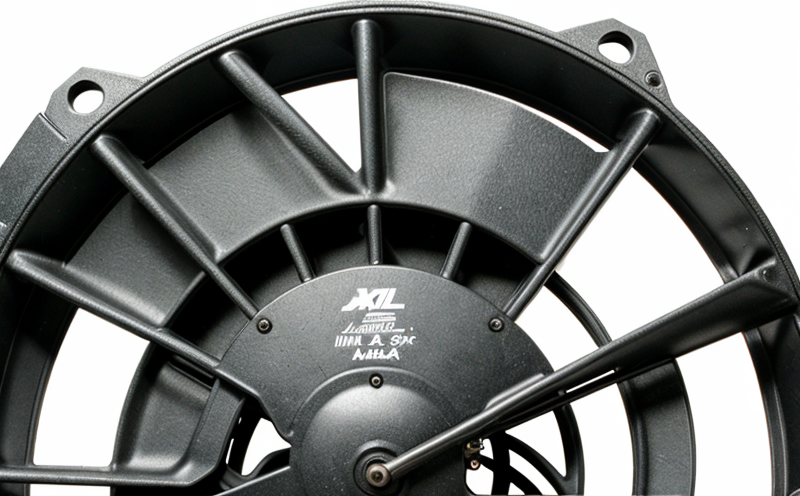Axial fan inspection
When it comes to HVAC and ventilation systems, axial fans are a critical component. They move large volumes of air efficiently, ensuring optimal performance in both cooling and heating applications. An axial fan inspection is essential for maintaining the integrity and efficiency of these systems over time. Properly inspecting an axial fan ensures that it operates within specified limits, enhancing energy efficiency and reducing operational costs.
The primary goal of an axial fan inspection is to identify any potential issues before they lead to system failures or reduced performance. This service involves a comprehensive examination of the fan's mechanical components, electrical connections, and overall functionality. By using advanced diagnostic tools and techniques, our team can pinpoint even subtle signs of wear and tear that could compromise the fan’s reliability.
During an inspection, we adhere strictly to international standards such as ISO 8573-1 for air quality in compressed air systems, which indirectly applies to HVAC. We also follow ASTM E694 for testing mechanical fastenings, ensuring our procedures are consistent with industry best practices. Our team uses state-of-the-art equipment calibrated according to these standards to measure parameters like speed, airflow volume, and static pressure.
Preparation of the fan prior to inspection is crucial. This includes disconnecting power sources safely to avoid electrical hazards, cleaning the exterior and interior surfaces thoroughly, and ensuring all components are in place before testing begins. Once prepared, we conduct a series of checks including visual inspections for visible damage or corrosion, measuring dimensions using precision tools, checking for balance issues through rotational testing, and verifying electrical connections with multimeters.
The results of an axial fan inspection provide critical insights into the current condition of the equipment. These findings help facility managers make informed decisions about necessary maintenance activities to prevent costly repairs later on. Regular inspections also contribute significantly towards compliance with relevant regulations governing indoor air quality and safety standards.
| Aspect | Description |
|---|---|
| Mechanical Components | Evaluation of bearings, blades, motor shafts for signs of wear or damage. |
| Electrical Connections | Checking insulation integrity and continuity between terminals. |
| Airflow Volume | Measurement using anemometers to ensure proper airflow rates. |
| Static Pressure | Assessment of pressure drop across the fan system ensuring efficient operation. |
In summary, regular axial fan inspections are indispensable for maintaining HVAC and ventilation systems at peak performance levels. They enable proactive maintenance strategies that extend equipment lifespan while minimizing downtime and associated expenses.
Why It Matters
The importance of axial fan inspection cannot be overstated in the context of HVAC and ventilation systems. Efficient fans contribute directly to energy savings, which can translate into substantial cost reductions for facilities. By preventing premature failures, inspections help ensure continuous operation without disruptions due to unforeseen breakdowns.
- Reduces operational costs through improved efficiency.
- Prolongs equipment lifespan by detecting early signs of wear and tear.
- Avoids unexpected system downtime which could impact daily operations.
- Complies with relevant safety regulations, protecting both personnel and the environment.
Moreover, regular inspections play a vital role in maintaining indoor air quality standards. Clean, well-functioning fans contribute significantly to reducing particulate matter levels within buildings, thereby promoting healthier living environments.
Industry Applications
| Application Area | Description |
|---|---|
| Data Centers | Ensuring reliable cooling in high-density computing environments. |
| Healthcare Facilities | Providing consistent air flow to critical areas like operating theaters. |
| Manufacturing Plants | Supporting process control by maintaining stable temperature and humidity levels. |
| Offices and Commercial Buildings | Improving overall comfort and productivity in workspaces. |
In each of these sectors, axial fans are integral to the proper functioning of HVAC systems. The inspection process ensures that they continue performing optimally under varying conditions, thereby supporting critical functions within these facilities.
- Data centers require precise temperature regulation to avoid overheating servers.
- Healthcare settings demand clean air to prevent contamination risks.
- Manufacturing plants rely on controlled environments for quality assurance processes.
- Office spaces benefit from enhanced occupant comfort leading to higher satisfaction rates.
An axial fan inspection thus becomes a cornerstone of facility management, contributing not only to technical performance but also to broader operational goals across multiple industries.
International Acceptance and Recognition
| Standard | Description |
|---|---|
| ISO 11348 | Specification for the performance of fans. |
| EN 15769 | Performance requirements and test methods for axial fans. |
Axial fan inspections are widely recognized across international standards bodies. These guidelines provide a framework that ensures consistent quality and performance metrics worldwide. Compliance with these standards is essential for facilities seeking to ensure their HVAC systems meet global safety and efficiency benchmarks.
- ISO 11348 establishes criteria for evaluating fan performance, including static pressure, flow rate, and power consumption.
- EN 15769 outlines detailed procedures for testing axial fans, covering everything from initial setup to final verification.
The adoption of these international standards reflects the commitment to excellence in HVAC and ventilation systems. By adhering to them during inspections, we guarantee that our clients receive services that are not only reliable but also meet stringent global quality expectations.





